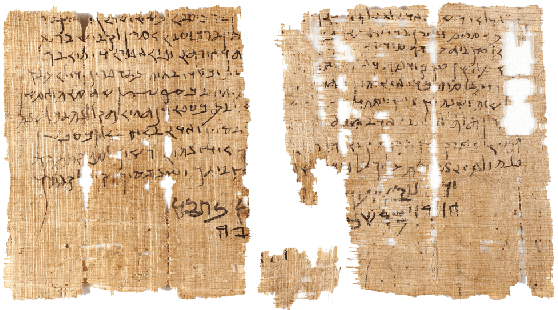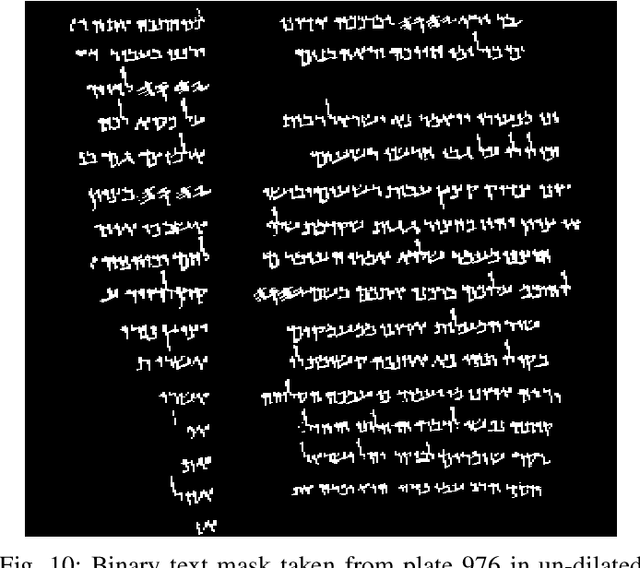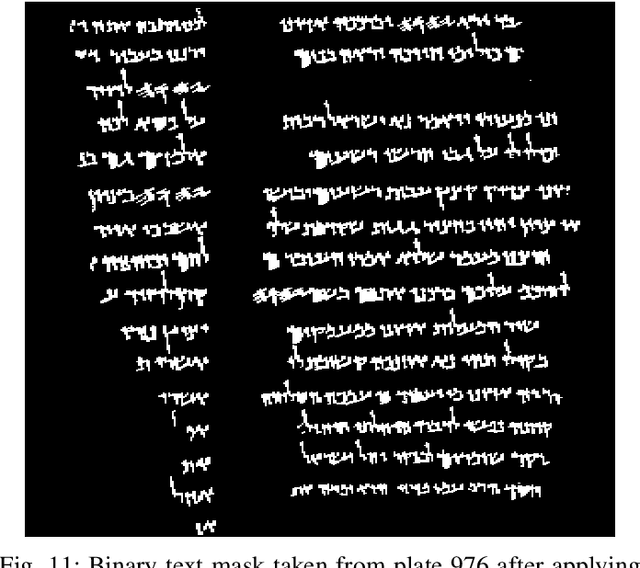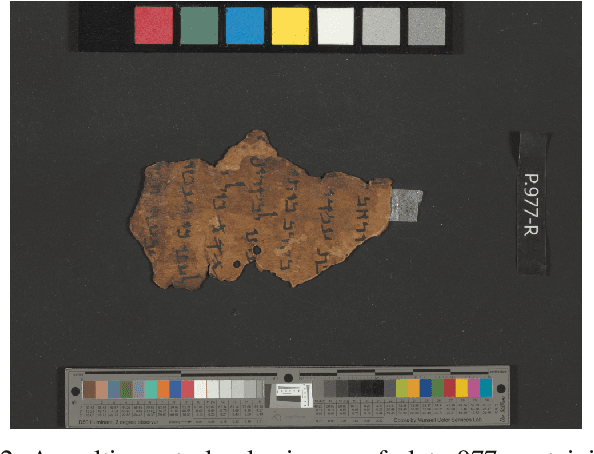Image-based material analysis of ancient historical documents
Paper and Code
Mar 02, 2022



Researchers continually perform corroborative tests to classify ancient historical documents based on the physical materials of their writing surfaces. However, these tests, often performed on-site, requires actual access to the manuscript objects. The procedures involve a considerable amount of time and cost, and can damage the manuscripts. Developing a technique to classify such documents using only digital images can be very useful and efficient. In order to tackle this problem, this study uses images of a famous historical collection, the Dead Sea Scrolls, to propose a novel method to classify the materials of the manuscripts. The proposed classifier uses the two-dimensional Fourier Transform to identify patterns within the manuscript surfaces. Combining a binary classification system employing the transform with a majority voting process is shown to be effective for this classification task. This pilot study shows a successful classification percentage of up to 97% for a confined amount of manuscripts produced from either parchment or papyrus material. Feature vectors based on Fourier-space grid representation outperformed a concentric Fourier-space format.
 Add to Chrome
Add to Chrome Add to Firefox
Add to Firefox Add to Edge
Add to Edge